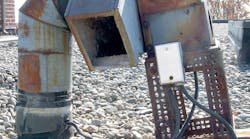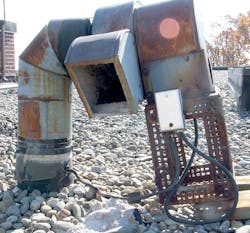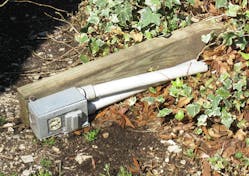How well do you know the Code? Think you can spot violations the original installer either ignored or couldn’t identify? Here’s your chance to moonlight as an electrical inspector and second-guess someone else’s work from the safety of your living room or office. Can you identify the Code violation(s) in this photo? Note: Submitted comments must include specific references from the 2011 NEC.
Hint: Warm and Fuzzy
Find the Answer
APRIL WINNERS
Our three winners this month were: Jesse Gatewood, training director, IBEW, Corpus Christi, Texas; Alan Cardwell, P.E., electrical engineering consultant, U.S. Army Corps of Engineers, Eads, Tenn.; and David Engelhart, electrical plans examiner, building review and permitting, Growth Management Division, Collier County, Naples, Fla. They all correctly identified problems with this outdoor receptacle.
According to 314.15, “in damp or wet locations, boxes, conduit bodies and fittings shall be placed or equipped so as to prevent moisture from entering or accumulating within the box, conduit body, or fitting.”
The conduit doesn’t appear to be securely fastened as it should be according to 300.11(A) and 352.30(A). In addition, 314.23(B) requires “rigid” support of enclosure; although the enclosure is perhaps adequately fastened to the post, the “support” of the outlet box along with its raceway is not a “rigid” support.
The receptacle should be a GFCI type unit [210.8(A)(3) or 210.8(B)(4)]. It should also be securely fastened in place as per 406.5. Section 406.9(B)(1) requires 15A and 20A, 125V receptacles to have a weatherproof enclosure — whether or not the attachment plug cap is inserted. The receptacle should be identified as a “WR” (weather-resistant) type. Depending on the location of this installation, if an outlet box hood is used for weather protection, the enclosure supported from grade per 314.23(B) requires an “extra-duty” type listed hood.






